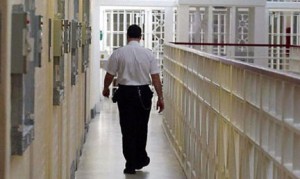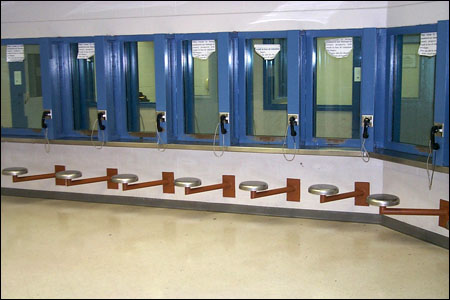 As this article shows, the effort to keep contraband, such as cell phones, out of prisons and jails is extensive.The irony is that there is little effort to address the demand side of the equation. As the article states, “visitation and phone privileges are the two things inmates fear losing more than anything else. They’re also the privileges corrections officers are most reluctant to take away, leery of eliminating what may be a prisoner’s main incentive to behave himself.” Prisons can offer a secure cell phone solution to reduce the demand for contraband cell phones and at the same time add another privilege that can be used to control behavior.
As this article shows, the effort to keep contraband, such as cell phones, out of prisons and jails is extensive.The irony is that there is little effort to address the demand side of the equation. As the article states, “visitation and phone privileges are the two things inmates fear losing more than anything else. They’re also the privileges corrections officers are most reluctant to take away, leery of eliminating what may be a prisoner’s main incentive to behave himself.” Prisons can offer a secure cell phone solution to reduce the demand for contraband cell phones and at the same time add another privilege that can be used to control behavior.
The visiting room at the Maryland Correctional Training Center bustles with activity.
Inmates and the people who’ve come to visit them sit separated by a high brick wall, catching up on the latest news from home or perhaps just enjoying seeing each other again.
Inmates are allowed two visits per week, as long as they behave, said Capt. Steven Myers as he stands along the side wall of the room.
Visitation and phone privileges are the two things inmates fear losing more than anything else, Myers said. They’re also the privileges corrections officers are most reluctant to take away, leery of eliminating what may be a prisoner’s main incentive to behave himself.
But the visits can also pose another problem for the prison’s staff.
The wall, built by inmates in the prison’s masonry program, keeps prisoners from switching shoes with a family member under a table, or the many other methods of sneaking contraband into the prison, Myers said.
Contraband consists of anything a prisoner isn’t allowed to have, with some of the most common items being cellular phones, tobacco products and drugs, said Erin Julius, a spokeswoman for the Division of Correction.
Prisoners enter from one side of the visiting room and wind their way around the brick wall to the chairs on their side. Visitors enter from the other side of the room and take a seat across from them.
The high wall between prisoners and visitors, built by inmates in the prison’s masonry program, cuts down on the flow of contraband, Myers said.
Touching is mostly forbidden during visits, with the exception of one quick embrace per person per visit.
The wall between them is so high that just their heads visible over it. Any hands reaching across to exchange items would likely stand out to the handful of corrections officers who carefully scan the room.
To make doubly sure, inmates are led into a small room after their visit and strip-searched for any illicit materials.
In another part of the prison, a specially designed chair can scan prisoners’ body cavities to check for contraband.
X-ray machines scan inmates’ belongings, and facilities have specially trained dogs that can sniff out cellular phones, Julius said.
Cell phones are a particular source of consternation for corrections officials.
According to a report from the state’s Department of Public Safety and Correctional Services, Maryland prisons confiscated 1,128 cell phones in fiscal 2010.
Gov. Martin O’Malley’s office recently announced that the state had received a $350,000 federal grant to reduce the number of cell phones in Baltimore prisons.
The funds are targeted to increase staffing to crack down on gang members and other criminals who use cell phones to continue their criminal activity inside jails, and to ferret out prison staffers who help inmates get phones.
“Too many inmates are using contraband cell phones to harass witnesses and victims and orchestrate crimes behind prison walls, defying prison rules and law enforcement,” said U.S. Sen. Ben Cardin, D-Md., in a press release.
- Multi-Blockchain System for Inmate Forensics - April 2, 2024
- Blockchain to Secure Attorney-Inmate Privacy for Prison Calls - June 28, 2023
- meshDETECT® Announces Grant of Ninth Patent For Blockchain Wireless Services - August 26, 2022




